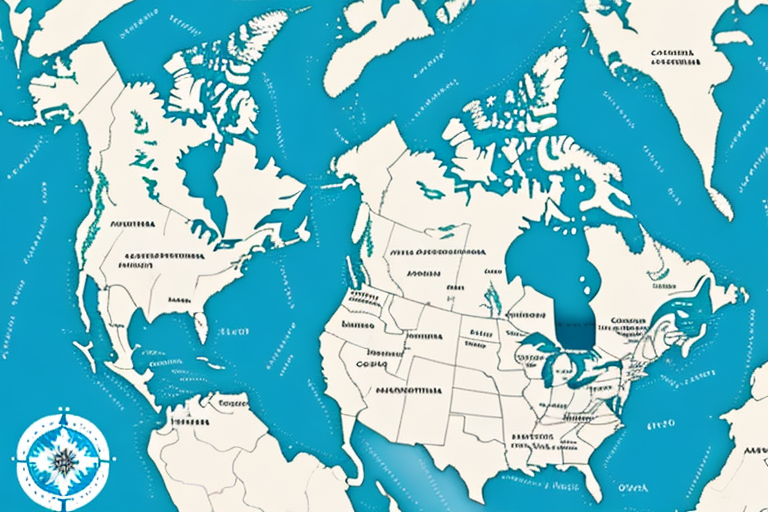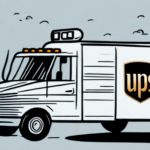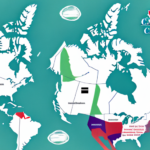Understanding UPS Shipping Rates from Canada to the US
Are you a Canadian business looking to ship your products to the United States? Understanding UPS shipping rates is crucial for managing your shipping costs effectively. Cross-border carrier rates can vary significantly based on several factors. This guide provides an in-depth analysis of UPS shipping rates from Canada to the US, incorporating relevant data and insights to help you make informed decisions.
Factors Affecting UPS Shipping Rates from Canada to the US
Several key factors influence the cost of shipping with UPS from Canada to the US:
- Weight and Dimensions: Heavier and larger packages typically incur higher shipping costs. For instance, a package weighing over 70 lbs may face additional surcharges.
- Distance: The distance between the origin and destination directly impacts the shipping rate. Shipping from Toronto to New York will generally be less expensive than shipping from Vancouver to Miami.
- Service Type: UPS offers various service options such as Same-Day, Next-Day Air, and Ground shipping. Each service has different pricing based on delivery speed and reliability.
- Shipment Value: High-value items may require additional insurance or declared value coverage, increasing the overall shipping cost.
- Seasonal Demand: During peak seasons like the holiday period, shipping rates may surge due to increased demand. According to UPS's 2023 report, holiday shipping costs can rise by up to 15% compared to off-peak periods.
- Customs Regulations and Fees: Compliance with US customs regulations can introduce additional fees and delays. Proper documentation is essential to avoid unexpected costs.
Understanding these factors can help you strategize and optimize your shipping processes to minimize costs.
How to Calculate UPS Shipping Rates for Canadian Businesses
Calculating UPS shipping rates accurately is essential for budgeting and pricing your products competitively. Here are the primary methods:
- UPS Online Shipping Calculator: Visit the UPS website and use their shipping calculator. Enter details such as package weight, dimensions, origin, and destination to receive a price estimate.
- Contacting a UPS Representative: For tailored pricing options, especially if you're a frequent shipper, speaking directly with a UPS representative can provide access to business accounts and discounted rates.
- Third-Party Shipping Software: Utilize shipping software that integrates with your e-commerce platform or inventory management system. These tools can automatically calculate shipping rates based on real-time data, ensuring accuracy and efficiency.
It's advisable to compare rates from different carriers and shipping methods to ensure you're getting the best value for your business needs.
Tips for Saving Money on UPS Shipping Rates from Canada to the US
Shipping internationally can be costly, but with strategic approaches, Canadian businesses can reduce UPS shipping expenses:
- Optimize Package Size and Weight: Use appropriately sized packaging to avoid unnecessary weight and dimensional surcharges. Lightweight, compact packages cost less to ship.
- Leverage UPS Account Discounts: Enroll in a UPS business account to access discounted shipping rates and special offers. Regular shippers often receive significant savings.
- Choose Ground Shipping: Opting for ground shipping instead of air freight can lead to substantial cost reductions, especially for non-urgent shipments.
- Consolidate Shipments: UPS offers consolidated shipping options that combine multiple packages into one shipment, reducing overall costs for high-volume shipping.
- Use UPS Online Tools: Utilize UPS's online tools for estimating shipping costs, tracking packages, and managing shipments. These tools help streamline processes and prevent costly errors.
- Eco-Friendly Packaging: Implementing eco-friendly packaging materials can reduce shipping costs by decreasing package weight and size. Additionally, it enhances your brand's sustainability image.
Implementing these tips can lead to significant savings and more efficient shipping operations.
Comparing UPS Shipping Rates to Other Carriers for Cross-Border Shipping
While UPS is a prominent player in the shipping industry, it's essential to compare rates and services with other carriers to ensure you're getting the best deal:
- FedEx: Known for its reliable express services, FedEx offers competitive rates and a variety of shipping options similar to UPS.
- DHL: Specializing in international shipping, DHL provides extensive global coverage and competitive pricing for cross-border shipments.
When comparing shipping rates, consider not only the cost but also factors such as delivery time, reliability, and additional services like tracking and insurance. According to industry reports, businesses that compare carriers regularly can save up to 20% on shipping costs annually.
Additionally, be mindful of any additional fees or surcharges, including fuel surcharges, residential delivery fees, and customs clearance costs. These can significantly impact the total shipping expense.
The Impact of Customs Fees and Taxes on UPS Shipping Rates from Canada to the US
Customs fees and taxes are critical components of cross-border shipping costs. Canadian businesses shipping to the US must navigate these charges effectively:
- Customs Brokerage Services: UPS offers customs brokerage services to manage documentation and compliance, ensuring smooth customs clearance.
- Fee Variations: Customs fees and taxes vary based on the product type, value, and destination. For example, electronics may have different duty rates compared to apparel.
- Documentation Accuracy: Proper documentation reduces the risk of delays and additional fees. Ensure all shipment information is accurate and complete.
- Potential for Unexpected Costs: Shipments may be subject to inspections, leading to unforeseen fees and extended delivery times. UPS's real-time tracking and proactive communication can help mitigate these risks.
Staying informed about US customs regulations and preparing accordingly can prevent costly delays and ensure timely delivery of your shipments.
How to Navigate the Complexities of International Shipping with UPS
International shipping involves numerous variables, but UPS provides tools and resources to simplify the process:
- UPS Online Shipping Tools: Utilize the UPS online shipping tools for calculating rates, generating labels, and tracking shipments.
- Customs Brokerage Services: Access UPS's customs brokerage to handle complex international trade regulations and documentation.
- Dedicated Support: Contact UPS customer service for personalized assistance and advice on optimizing your international shipping strategy.
- Educational Resources: Explore UPS's library of resources, including guides and webinars, to stay updated on best practices and regulatory changes.
Leveraging these resources can streamline your international shipping operations, reduce errors, and ensure compliance with all necessary regulations.
Understanding the Different Shipping Options Available from UPS for Cross-Border Shipments
UPS offers a range of shipping options tailored to different business needs and budgets:
- UPS Ground: The most economical option for non-urgent shipments, providing reliable delivery within North America.
- UPS Air: Includes UPS Worldwide Express and UPS Worldwide Saver for faster delivery times. Suitable for time-sensitive shipments.
- UPS Freight: Ideal for large, heavy shipments, offering LTL (Less Than Truckload) and FTL (Full Truckload) services.
- UPS Express Critical: Provides emergency shipping solutions for urgent and high-priority shipments.
- Scheduled Pickup: Arrange for pickups at your convenience, ensuring timely dispatch of your shipments.
By understanding the available shipping options, businesses can select the most appropriate method based on delivery speed, cost, and shipment size.
Avoiding Common Mistakes When Shipping from Canada to the US with UPS
Even experienced shippers can encounter challenges when managing cross-border shipments. Here are common mistakes to avoid:
- Ignoring Customs Regulations: Failing to comply with US customs laws can lead to delays and fines. Always stay informed about the latest regulations.
- Incorrect Documentation: Incomplete or inaccurate paperwork can result in shipment holds and additional fees. Double-check all shipment details before dispatch.
- Choosing the Wrong Service: Selecting a shipping service that doesn't align with your delivery requirements can lead to unnecessary costs. Assess your needs carefully before choosing a service.
- Poor Packaging: Inadequate packaging can cause damage, resulting in returns and increased costs. Use quality materials and proper packing techniques to safeguard your products.
- Neglecting to Track Shipments: Without tracking, you may be unaware of delays or issues. Utilize UPS's tracking tools to monitor your shipments in real-time.
By avoiding these common pitfalls, businesses can ensure smoother shipping operations and enhance customer satisfaction.
Tips for Efficiently Packaging and Labeling Your Shipment with UPS
Proper packaging and labeling are essential for the safe and timely delivery of your shipments:
- Use Durable Packaging: Select sturdy boxes and appropriate cushioning materials to protect your products during transit.
- Accurate Labeling: Ensure that all labels are clear, legible, and securely attached. Include complete addresses, contact information, and any necessary handling instructions.
- Include Necessary Documentation: Attach all required customs forms and invoices to facilitate smooth customs clearance.
- Optimize Package Size: Use the smallest possible packaging that adequately protects your items to reduce shipping costs.
- Seal Packages Properly: Use high-quality packing tape to seal all openings and prevent accidental openings during transit.
Implementing these packaging and labeling best practices can minimize the risk of damage, delays, and additional costs.
Understanding Insurance Options for Your Shipment with UPS
Protecting your shipments against unforeseen circumstances is vital for maintaining business integrity:
- Standard Liability: UPS includes a basic level of liability coverage for all shipments, covering minor damages or losses.
- Declared Value Coverage: For high-value items, you can declare a higher value, ensuring greater protection against significant losses or damages.
- Third-Party Insurance: Consider additional insurance options from third-party providers for comprehensive coverage tailored to your specific needs.
- Customs Bond Insurance: Protects against delays and additional fees related to customs issues, ensuring smoother cross-border transactions.
Assess your shipment's value and risk factors to determine the most appropriate insurance coverage. Consulting with a UPS representative can help you choose the best option for your business needs.
How to Track Your Shipment and Manage Delivery Expectations with UPS
Effective tracking and communication are essential for managing delivery expectations:
- Real-Time Tracking: Utilize UPS's tracking tools to monitor your shipment's progress in real-time, providing visibility from pickup to delivery.
- Delivery Alerts: Sign up for UPS delivery alerts to receive notifications about your shipment's status, including estimated delivery times and any changes.
- Manage Delivery Preferences: Use UPS My Choice to customize delivery options, such as redirecting packages or setting specific delivery times.
- Proactive Communication: Keep your customers informed by sharing tracking information and providing updates on any delays or issues.
By leveraging UPS's tracking and communication tools, businesses can enhance transparency and improve customer satisfaction.
Best Practices for Customer Service When Shipping with UPS from Canada to the US
Exceptional customer service can differentiate your business and foster customer loyalty:
- Provide Accurate Information: Ensure all shipment details are correct to prevent delays and enhance customer trust.
- Share Tracking Information: Keep customers informed about their shipment's status by sharing tracking numbers and updates.
- Respond Promptly: Address customer inquiries and concerns related to shipping swiftly to maintain satisfaction.
- Handle Issues Efficiently: In case of delays or problems, communicate proactively and offer solutions to resolve issues effectively.
- Solicit Feedback: Encourage customers to provide feedback on their shipping experience to identify areas for improvement.
By implementing these customer service best practices, businesses can build trust and ensure a positive shipping experience for their customers.
Common Questions and Concerns About UPS Shipping Rates from Canada to the US
Addressing common queries can help businesses navigate UPS shipping more effectively:
- What are the average customs fees and taxes? Customs fees and taxes vary based on the product category and shipment value. It's essential to consult the US Customs and Border Protection guidelines for specific rates.
- How can I minimize the risk of lost or damaged shipments? Use proper packaging, declare accurate shipment values, and consider additional insurance coverage to protect against potential losses.
- What should I do if my shipment is delayed? Contact UPS customer service for real-time updates and assistance. Utilize tracking tools to monitor the shipment's status.
- Are there any hidden fees I should be aware of? Be aware of potential surcharges such as fuel fees, residential delivery charges, and customs brokerage fees. Review UPS's fee schedule to understand all possible costs.
For comprehensive answers, refer to UPS's official resources or consult with a UPS representative to address specific shipping concerns.
Conclusion
In conclusion, Canadian businesses aiming to ship products to the United States must comprehend UPS shipping rates and the various factors influencing them. Key determinants include package weight and dimensions, shipping distance, service type, and the value of the shipment. By implementing best practices such as optimizing packaging, leveraging insurance options, and utilizing UPS's tracking tools, businesses can effectively manage shipping costs and ensure timely deliveries.
Additionally, comparing UPS rates with other carriers and staying informed about customs regulations can further enhance shipping efficiency and cost-effectiveness. Whether you're a first-time shipper or an experienced one, UPS offers a comprehensive range of services and resources tailored to meet your cross-border shipping needs, ensuring your business operates smoothly and competitively in the North American market.








